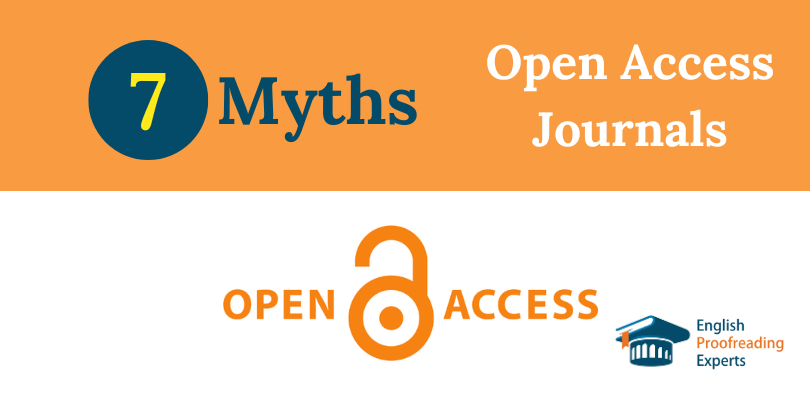Seven Myths about Open Access Journals
- December 9, 2023
- Posted by: Yury Subachev, PhD
- Categories: Education and trainings, For young scientists, Paper publication
-
Post Views: 479

The main features of Open Access journals and their difference from the traditional subscription system were described in the previous article, in particular, the advantages of being published in such journals for authors and readers.
The present material aims to dispel 7 main myths about Open Access journals.
Despite all the advantages of open access journals, some scientists are still wary of this type of publication because of the numerous myths engendered around this subject. Many of such myths are completely unfounded. Let us address the most popular ones
This judgement is accounted for by the fact that the income of open access journals is much related to the number of published articles. In virtue of this factor, any journal intending to earn as much as possible is believed to publish all kinds of scientific papers without paying due attention to their quality. On the other hand, the traditional-format journals, for the sake of increasing the number of readers, may publish articles pertaining to other disciplines without scrutinising them.
One should not be afraid of this since there are many reputable and highly rated editions among the open access journals.
2. Articles are not peer-reviewed in Open Access journals.
Any academic edition must provide peer-reviewing by competent scholars engaged in research in the same field as the one the published material belongs to. Open Access journals are no exception and are subject to the same rules. To maximise the efficiency of reviewing, many publishers practice double anonymous peer review. This approach ensures that only the highest-quality articles make it to the print.
In addition, all the papers published in Open Access journals are openly discussed by the broad audience of interested readers, which can be regarded as another stage of obtaining informal independent reviewing.
3. Open access publications are not indexed in Scopus and Web of Science databases.
The Open Access system already includes almost 4 thousand information sources, while WoS has just over 2 thousand. In this regard, the statement about no indexing of Open Access journals is groundless.
Whether it be open or closed access to publications – this has nothing to do with inclusion of a publication in the international database.
4. Open Access journals do not have an impact factor or it is very low.
Quite the opposite, the accessibility and openness of publications for viewing by a wide range of researchers increases the citation index of articles significantly. This index is often not inferior to that shown by reputable international journals of traditional format. To verify the high values of this index, it is sufficient to familiarise oneself with the statistics of Open Access journals in open catalogues, for instance, in DOAG.
5. Any articles are indiscriminately allowed for publication.
If a journal allows everything for publication without reviewing the material it will quickly become a low-quality edition. Open Access does not imply admission of all publications indiscriminately. Placement of articles in Open Access journals also requires compliance with a number of rigid requirements. The importance and authority of a particular edition is defined by high quality of published scientific papers, high requirements set for publications and competent peer reviewing.
In order to make sure that the edition is conscientious it is sufficient to familiarise oneself with some papers published in the journal. Two or three articles will make it clear whether the editorial board has a responsible attitude to the quality of the published materials and to what extent.
6. No copyright protection.
Copyright covers all types of intellectual property regardless of the publication format. Unlike the traditional-format journals, Open Access journals offer an important advantage: the author does not transfer the copyright to the edition, while continuing to use it free.
7. One cannot publish an article in an Open Access journal without money.
Indeed, there are free-access journals where payment for publication is mandatory. But one should not be disappointed – the edition can offer a good discount for some categories of individuals. Some journals are funded by the publisher and they can publish a scientist’s work for free.
Conclusion
Open Access journals provide scholars from all over the world with free access to latest scientific developments on any research topic. Those who publish in Open Access journals will enjoy many advantages since a huge number of interested readers will get acquainted with their articles, which will step up the author’s citation index with all ensuing positive consequences.
There are both good and unworthy journals among such editions. When choosing among open access journals, it is necessary to verify (as is the case with any journal) the journal’s scientometric indicators, its rating and indexing in international databases.
In the previous post, read about all the features and advantages of Open Access journals.
How useful was this post?
Click on a star to rate it!
Average rating 5 / 5. Vote count: 7
No votes so far! Be the first to rate this post.
